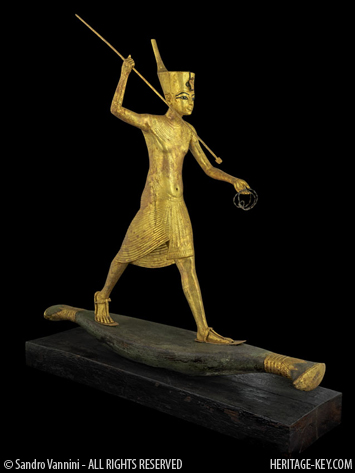 What can graffiti tellus about ancient cultures?That’s just one of the questions being explored at a Coptic Studies symposium to be held on May 29 at the University of Toronto.
What can graffiti tellus about ancient cultures?That’s just one of the questions being explored at a Coptic Studies symposium to be held on May 29 at the University of Toronto.
Coptic refers to the branch of Christianity that spread to Egypt as early as the first century AD. It also refers to a writing system that was in use from that time until present day.
The symposium is being organized by Dr. Ramez Boutros of the University of Toronto. Dr. Boutroshas been in the news recently as part of the team that recently discovered a third church and tons of monastic art at the site of Bawit in Egypt.
Boutros is being assisted by three organizations – TheCanadian Society for Coptic Studies (CSCS), the Department of Near and Middle Eastern Civilizations at the University of Toronto and the St. Marks Coptic Museum in Toronto.
Other highlights of the symposium will include a talk by Professor Stephen Davis of Yale University. He will be discussing excavation results from the White Monastery, also known as the Monastery of Saint Shenute of Atripe. Its foundation dates to the fourth century AD and, in fact, a 1500 year old church is still standing at the site although it has been repaired and remodelled several times.
Professor Jitse Dijkstra will be talkingdiscussing initial resultson a research project that looks at, yes,graffiti! Seriously,he has been doing a great deal of work on this topic. In his proposal paper Professor Dijkstra said that it is the first [project] to catalogue and interpret all the graffiti (about 300 in total, both figures and texts) from one temple, the temple of Isis at Aswan. It will be interesting to see what his research has revealed. “”People have looked, and still look, down on the ancient graffiti found in the temples of Egypt, which does not do justice to this highly interesting material.”
The symposiumwill be held at the University of Toronto on May 29, in the Earth Science Centre room 1050, from 9:45am to 5:30pm. Admission for CSCS member is $20 and $25 for non-members. Students get a discount. CSCS student members pay $10 and non CSCS student members pay $15. The fee includes lunch. The symposium schedule is below.
Schedule
8.30 – 9.45 Registration
9.45 – 10.00 Welcome
President: Canadian Society for Coptic Studies.
First Session
Chair: Prof. Jitse H.F. Dijkstra, Associate Professor and Head of Classics,
Department of Classics and Religious Studies, University of Ottawa.
10.00 – 10.45 Prof. Stephen Davis: Professor and Director ofUndergraduate Studies, Department of Religious Studies, Yale University.
“The Excavation of the Monastery of Saint Shenute of Atripe”.
10.45 – 11.00 (Discussion)
11.00 – 11.45 Prof. Anne Moore, Associate Professor, Department of Religious Studies, University of Calgary.
“Shenoute, Prophet for the People”
11.45 – 12.00 (Discussion)
12.00 – 1.30 Lunch Break
Second Session
Chair Prof. Stephen Davis.
1.30 – 2.00 Dr. Ramez Boutros, Instructor, NMC.
“The Cave Church of Gabal al-Tayr: a pilgrimage site from the Early Medieval Period in Middle Egypt”
2.00 – 2.30 Prof. Jitse H.F Dijkstra, Associate Professor and head of Classics, department of Classics and Religious Studies, University of Ottawa.
“The Isis Temple Graffiti Project: Preliminary Results”.
2.30 – 3.00 Coffee Break
Third Session
Chair: Prof. Sheila Campbell: Emeritus Fellow, Pontifical Institute of Medieval Studies (PIMS), U of T.
3.00 – 3.30 Dr. Emile Tadros: Researcher at the Higher Institute of Coptic Studies in Cairo, Department of Coptic Liturgical Music.
” ‘Cosmic Music’ in Early Christian Literature in Egypt”.
3.30 – 4.00 Dr. Helene Moussa: Volunteer Curator, St. Mark’s Coptic Museum, Scarborough.
“Icon of St. Mina, St. Mark’s Coptic Museum, Akhmim Style?”
4.00 – 4.30 Stretch break
Fourth session
Chair: Prof. Anne Moore.
4.30 – 5.00 Bishoy Dawood: Ph.D. Candidate in Systematic Theology, University of St. Michael’s College in the University of Toronto.
“The Coptic Calendar”.
5.00 – 5.30 Joseph Youssef: M.A. Student, York University
“Ritualization Processes in Coptic Monastic Rituals and Initiation Practices”.
5.30 Close
For more info click here, or visit St. Mark’s Coptic Museum Website.




